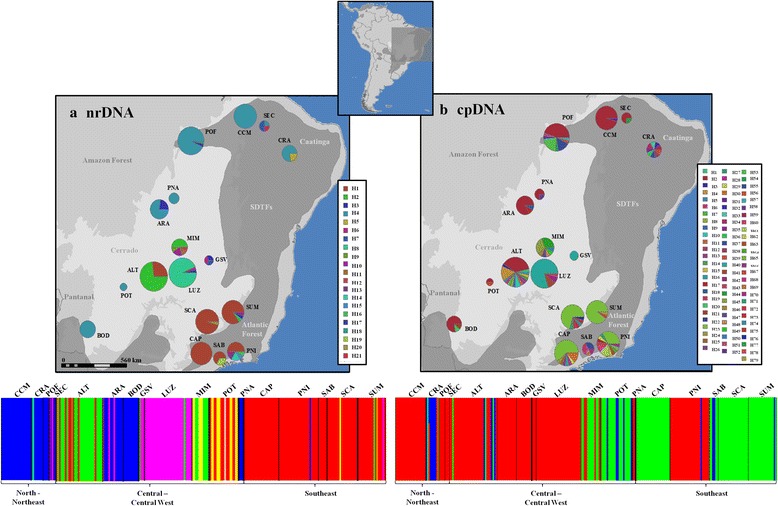Fig. 1.

Geographical distribution of haplotypes of Tabebuia serratifolia and Bayesian clustering for (a) ITS and (b) cpDNA, based on the sequencing of 257 individuals from 17 populations. Different colours were assigned for each haplotype according to the figure legend. The circle size represents the sample size in each population and the circle sections represent the haplotype frequency in each sampled population. For details on population codes and localities see Additional file 2: Table S1. For BAPS clustering, each colour represents an inferred cluster (5 clusters for ITS and 3 for cpDNA)
